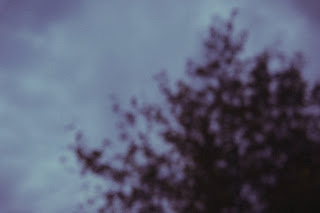"How little we know them," indeed.
It is the space between where my mothering ends and their wonder of the world begins.
For as much as each child depends upon the presence of my life, there are moments in the midst of my presence that I feel their absence.
There is something about sharing a birthday with two other family members. For as much as they have shared since the tiny beginnings of their lives, still...there is a space between. A space between where their unit ends and their individuality begin.
And I watch from afar. I follow dark shadows and footprints and bent knees to places that I know they must go alone. The space between where their role in my life ends and their role in their own life begins.
The photographs don't represent memories as much as they represent an acknowledgement...an acceptance. Or perhaps, a certain respect.
Hush....I say to myself. Shhhh. I filter out the noise, the excess, the unimportant pollution that distracts me from seeing that space. That space in between where she clings and lets go. The space where I don't exist because in that moment she is far far away...
The world carries them away. This I know. This I resist. This moment I freeze and negotiate and beg to slow, or simmer, or rewind.
But I can't compete with the grand world. It laps them up and lulls them with dreams and promises full of magic and wonder.
I follow. I watch. I listen.

I protect. And cheer.
I rally.
All the while I know that the beauty lies in their ability to fly away...to become who it is they are destined to become. Who they are beyond me.
Fly, I whisper. But not just yet.
Where are you, I wonder. Is momma there?
Where are you going, I wonder? Is momma there?
He is lost in color and sparkles and fantastic imagination. I am there but he lost in the sky.
I can touch her shoulder, or her hair, or the grain of sand on her toe. But I have no idea where she is this very moment. She is floating along the sea, counting feathers...She is building castles made of white glittery sand.
"How little we know them," indeed. They are making their own way and choosing their own paths.
I trace their footprints with my mind, knowing I cannot follow.
I observe these moments that I am no longer a part...
They are immersed in a world that I simply witness from the sidelines of motherhood.
Something catches his eye, sparks a thought, turns out an idea, summons a fear....
The tide comes in and out. They are near and far. They are everywhere and nowhere.
Oh how I wish the lens would capture and close the space. The space in between where I end, and they begin.
The space in between me and their world grows larger and wider and taller.
But I believe that it is in that space...the space between holding on and letting go...
that they will truly find each other.
In my photo essay, "The Space Between," I attempted to convey the irony and conflict that exists between the enormous responsibility of caring for a child (and in my case, 5 children) and the reality of their impenetrable separateness. Much to our paternal dismay, we are made vulnerable by their individuality. And despite our longing to grow, nurture, and plant them in the world, we are all at once in disbelief that as their life-giver, we are somehow left out of the softest, sweetest---perhaps significant utterances within their mysterious lives. We can't always hear what the world is saying to them. How can that be?
To further complicate my own story, my middle triplet (pictured in the tree and the canon camera lens) has Aspergers Syndrome which often makes the space between my world and his feel exponentially wide. His is the only front facing photo and although you can't make out the features, his climbing up and away instead of out and away (like the other children are pictured) represents his unique way of thinking---his life on his terms.
As a whole, I feel like my project differed from those we have discussed in class in that the pictures I selected were taken randomly over a period of time and not taken specifically for any such project. In other words, it wasn't until I began searching through hundreds of photos that I was able to feel the punctum. There is no doubt that my subconscious resistance to the awareness of my threatened maternal role was a factor each and every time I selected to capture an image. I realize that now. There is no doubt that my choice to edit my photos enabled me to filter out noise and center on that which I was simultaneously trying to resist and square away. The narrative I was telling was directed to myself, that part of the self which wanted to make sense of the feelings swirling around the evolution of roles and identities and realities. The shifting of the spaces. I often say to my children (in the privacy of my head), "oh, if I could write you..." And then I snap a photo and I bring out the finest point, and write to them, about them, with them--through that photo. The color, the style, the artistry is a way to let the rest fall away and focus on the poems that they are to me.





































